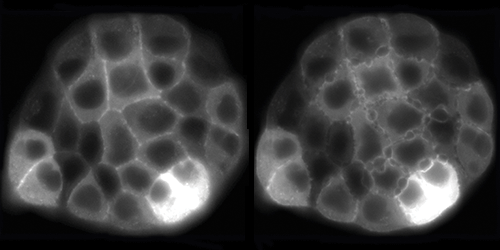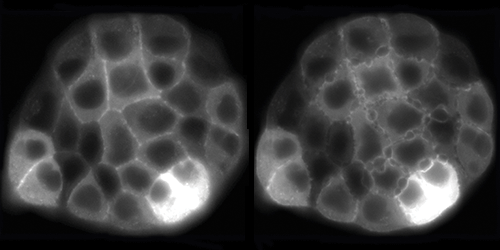Unexpected Cracking Behavior in Composite Structures
Brittle materials crack when stretched. A new theoretical analysis shows that this and other familiar properties are turned upside down when a brittle material is placed in contact with a hydrogel or similar porous substance. The researchers found that such a composite structure can resist fracture under tension and crack more easily under compression. The porous companion also causes cracking to occur at multiple sites, which may explain the observed toughness of certain biological tissues.
Recent experiments uncovered unusual fracturing behavior in epithelial tissues, which line the surfaces of organs and blood vessels in the body. These brittle cell layers split apart when stretched but also— surprisingly—when compressed. This cracking was apparently due to hydraulic forces produced by the porous hydrogel that surrounds the tissues.
To better understand this behavior, Antonio DeSimone of the International School for Advanced Studies, Italy, and his colleagues constructed a mathematical model and carried out simulations of a brittle layer placed on top of a hydrogel substrate. The composite is compressed or stretched in a direction parallel to the interface. The most interesting results occurred when the hydrogel was stiffer than its brittle counterpart. Under compression, the hydrogel pores squeezed in, forcing fluid up into small, pre-existing cracks in the brittle layer and causing them to open up more. Under tension, a reverse effect happened that pulled fluid out of cracks and prevented fracturing. When fracturing did occur under various circumstances, the hydrogel caused multiple cracks to open, which helped dissipate energy and avoid catastrophic failure. This multiple cracking is observed in epithelial tissues as well as strong biological materials, like nacre and silk.
This research is published in Physical Review Letters.
–Michael Schirber





